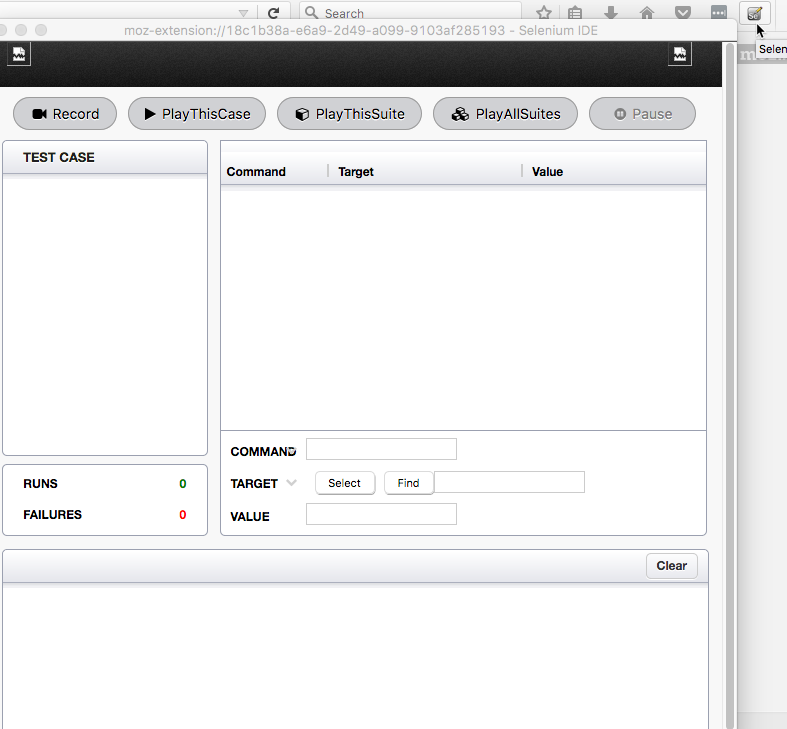Building Selenium IDE TNG On MacOS
Download MacPorts from https://www.macports.org/install.php
If you had a terminal session open, close it and start a new one to reload the environment path.
Check the port command is available.
which port
/opt/local/bin/port
Install yarn.
sudo port install yarnCheck yarn is running.
yarn --version
1.0.2
Login to your GitHub account and fork the selenium-ide repo so you can contribute patches back to the source.
Clone the repo to your box:
git clone <your-github-email>:<your-github-id>/selenium-ide.git
This creates a selenium-ide directory under the current directory.
Go to that directory.
Add some missing yarn packages:
yarn add webpack
Build the extension.
yarn build
Stuff…stuff…stuff…
[19] ./LocatorBuilders.js 13.3 kB {0} [built]
+ 5 hidden modules
Child html-webpack-plugin for “panel.html”:
1 asset
[0] ../node_modules/html-webpack-plugin/lib/loader.js!./panel.html 14.9 kB {0} [built]
+ 3 hidden modules
✨ Done in 3.05s.
You are now ready to add the extension to Chrome or Firefox.
Open Firefox version 55 or higher and follow these instructions:
https://developer.mozilla.org/en-US/Add-ons/WebExtensions/Temporary_Installation_in_Firefox
- enter “about:debugging” in the URL bar
- click “Load Temporary Add-on”
- open the extension’s directory and select any file inside the extension.
In this case you’ll look for the selinium-ide/build/manifest.json file and select that to enabled the IDE.
You should now see the Se button on the browser and when clicked get the “Selenium IDE TNG” window which is very much a work in progress.


@Lance Cleveland – I’m very glad to see a blog post mentioning the new IDE. A few comments if you will:
– no need to install Port
– After cloning the repository all you need to do is run `yarn`
– then you run `yarn build`
– and all is left to open the browser’s extension page and, under developers mode, navigate to the /build folder where the manifest file is
all is explained in the README
Yarn is not installed on MacOS by default. Users will either need to install port or brew to get yarn installed. I chose port.